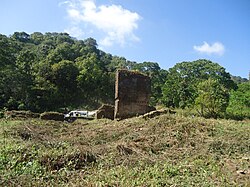| Sindhuli Gadhi | |
|---|---|
| Sindhuli District, Nepal | |
 The ruins of Sindhuli Gadhi | |
 Sindhuli Gadhi | |
| Site information | |
| Condition | Ruins |
| Location | |
| Coordinates | 27°16′50″N85°57′18″E / 27.2806°N 85.95501°E |
| Site history | |
| Materials | Stone, Mud |
| Battles/wars | Sindhuligadhi War [1] |
Sindhuli Gadhi is an historical fort and tourist attraction in central Nepal. Sindhuli Gadhi is famous for the battle between the then Gorkha Army and the British troop headed by Captain Kinloch. The Gorkha force under the command of Khajanchi Bir Bhadra Upadhyay and Sardar Banshu Gurung defeated the British troop in October 1767 (Ashoj 15, 1824 BS).
Contents
Sindhuli Gadhi lies in Sindhuli District of Janakpur Zone. It is currently a tourist attraction.


